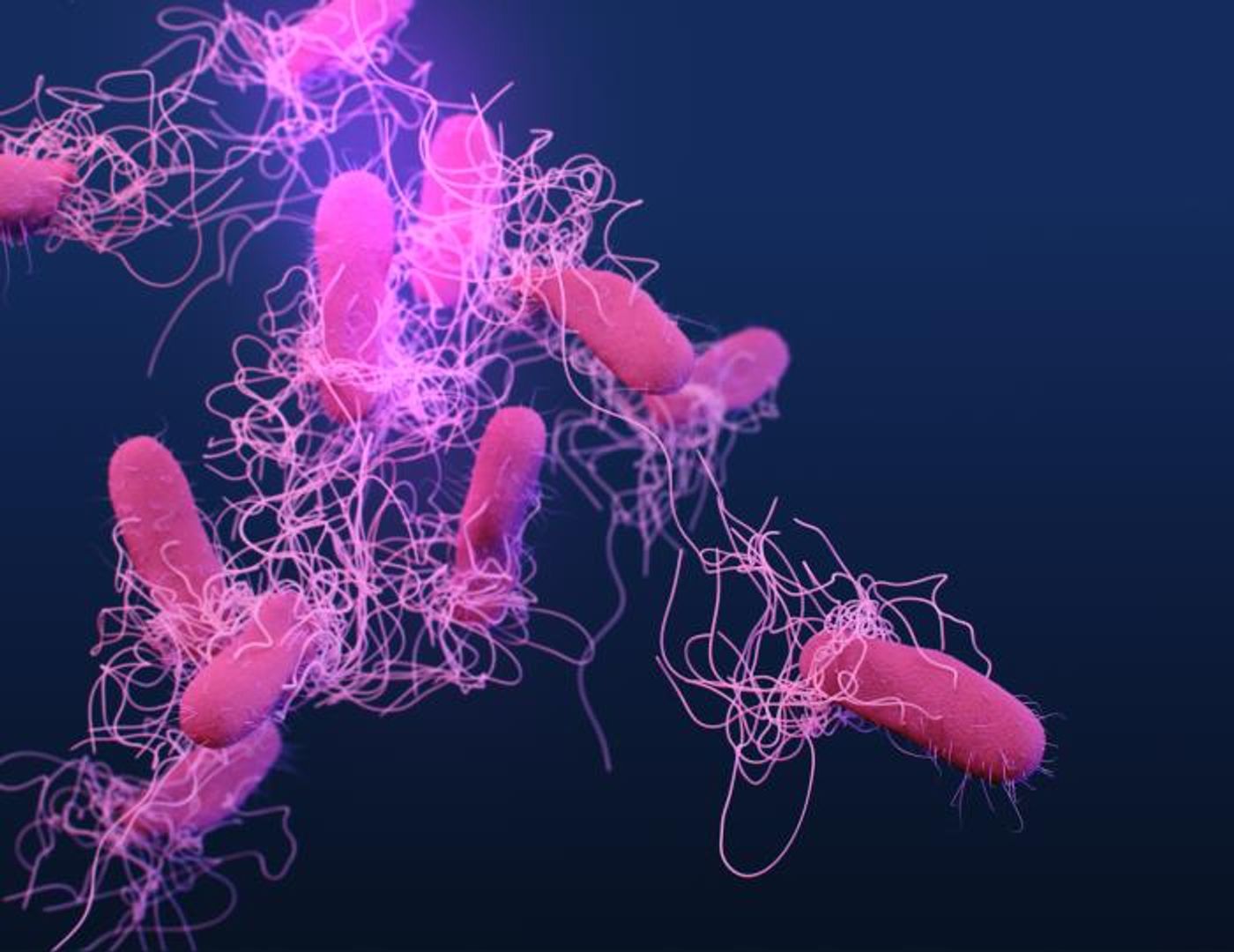A Microbial Pathogen Can Target an Electrical Signal in the Gut
Our skin is a crucial, protective barrier that is considered to be a major part of our immune defenses. When pathogens try to infect us, they have to get into our bodies or into our cells, and scientists have been looking for the ways that bacteria can bypass our defenses. Some pathogenic bacteria also have to navigate the complex community of microorganisms in the gut in order to cause infection in the gastrointestinal tract. Researchers have now found an unusual mode of entry for Salmonella pathogens, which involve bioelectrical signals the bacterium uses to infect the gut. The findings have been reported in Nature Microbiology.
Salmonella infections occur when the pathogenic germ invades the gut lining. It has to bypass protective microbes and immune defenses to do so. Still, Salmonella manages to cause an estimated 1.35 million illnesses and about 420 deaths in the US, annually.
Salmonella face about a one in a million chance of causing infection in the intestines, noted lead study author Yao-Hui Sun, a research scientist at UC Davis Health.
To learn more about how Salmonella cause infection, the researchers analyzed the movement of a Salmonella strain called S. Typhimurium, and compared it to the movement of a nonpathogenic strain of Escherichia coli (E. coli) bacteria, in a mouse model. The intestinal structure is similar to humans, with epithelium made up of villus epithelium that can aid in nutrient absorption, and follicle-associated epithelium (FAE). There are M cells in FAE that are crucial to the immune response; they monitor for pathogens by sampling antigens that pass through the gut.
In mice, Salmonella can detect electrical signals in FAE, and move to an area in the gut where there are openings to be exploited. Electric currents that entered at absorptive villi were detected exiting from FAE. Physical movement that is triggered by electric fields is known as electrotaxis or galvanotaxis.
There were electric fields at entry points that could be used by S. Typhimurium, explained senior study author Min Zhao, a professor at UC Davis, among other appointments.
E. coli cells did not react to these electric fields in the same way. They actually responded in the opposite way, with E. coli gathered at villi while S. Typhimurium built up at FAE.
A directional electric field of 2 V cm−1, causes E. coli (red) and Salmonella (green) to simultaneously and exclusively move towards the anode and the cathode, respectively.
"Notably, the bioelectric field in the gut epithelia is configured in a way that Salmonellae take advantage of to be sorted to the FAE and less so for E. coli," explained Sun. "The pathogen seems to prefer the FAE as a gateway to invade the host and cause infections."
Previous work has shown that bacteria can use chemotaxis, a response to chemical cues, to migrate. But this work has suggested that chemotaxis pathways are not related to the movement of Salmonella toward FAE.
The researchers suggested that these findings could help explain the mechanisms underlying some chronic diseases like inflammatory bowel disease (IBD).
"This mechanism represents a new pathogen-human body 'arms race' with potential implications for other bacterial infections as well as prevention and treatment possibilities," Zhao said. "It is believed that the root cause of IBD is an excessive and abnormal immune response against good bacteria. It will be interesting to learn whether patients prone to have IBD also have aberrant bioelectric activities in gut epithelia."
Sources: University of California Davis, Nature Microbiology









